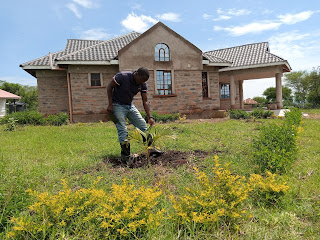I know you have been wondering which colour of honey to direct your hand to on the supermarket shelf or at any food store. Your struggle ends here. Many people have problem choosing between darker honey and light brown honey. Are you one.of them? I got you.
Before we continue, which one do you prefer and why?
Honey can be light, dark, or in between in colour. However, while honey is honey, there are some differences that you can point out when it comes to comparing light and dark honey with one another. That is what we are here to discuss here so that you can now know which one is the better choice for you.
All kinds of honey, dark or light are produced by honey bees that harvest the nectar of certain flowers, break it down into sugar, and deposit it in a honeycomb, which is where humans can collect it.
All types of honey, including dark honey, contain fructose, a type of sugar that is sweeter than sucrose (table sugar), so you can use less honey than you would sugar. You can add honey to things that you'd normally add sugar to, or use it as a sugar substitute in baking. We all know or have heard of honey's medicinal properties, haven't we? It can be used as meat preservative as well. Generally, honey is a natural sweetener with many health benefits.
Dark honey
Photo: courtesyDark honey is a kind of honey that has a dark-brown or dark-amber color, in contrast to light honey, which is whitish or light amber in color. Different colors of honey come from different floral sources as the nectar of different plants can vary in color and/or taste hence making the honey that the bees produce using these various types of nectar darker. Certain flowers that bloom year-round and produce lighter or darker honey depending on the time of year.
Sweeter and Richer.
Dark honey usually has a more intense, pungent taste than light honey. Most darker varieties of honey contain a higher concentration of antioxidants and other powerful nutrient. Dark honey varieties contain high amounts of antioxidants which combat free radicals, which are molecules that damage body cells.
Storage and taste
Taste of honey can also be affected by the container and care taken during storage. Glass containers maintain the honey's original taste (if cleaned properly prior to filling). Plastic and metal containers can leach chemicals into the honey and can alter the taste.
Ligher honey
Photo: courtesyLight honey is usually the type of honey that is as close to the golden honey color that we often think about when we are thinking about honey. In many ways, this is what we call the “prototypical” honey because this is what most people think honey should be in terms of its color. Just like dark honey, its colour is derived from the properties of nectar used.
Uses of different colours of honey:
Of course, different types of honey are used for different purposes because they differ in flavor profile and color, which can affect the overall taste of the dish or drink you may want to use the honey for.
Darker honey is mostly preferred for medical supplementing. Light honey is often used for drinks and for baking because it comes with a sweetness that will not overpower what you are preparing. For example, it generally goes well with coffee or tea if you want to use it for drinks. Light honey also goes well with your early morning cereal because it has a style of sweetness that blends well with milk.
Plants producing: Dark honey; ???
Light Honey: ???
It can be quite difficult to completely pinpoint which plants produce dark honey, but there are some plants that are specifically used in select apiaries so that the beekeepers can produce darker or lighter variants of the honey.
Sweetness of honey depending on plants
Arranged from sweetest to less sweet: Acacias, Sunflower, Eucalyptus, Citrus, alfafa, clover, cotton etc.
That is why Baringo honey is thought/ touted to be the Sweetest honey in East and Central Africa.
Technical Note:
Substances which determine honey quality include pollen, water content, sugar content, proteins, enzymes, phenolic compounds, flavonoids, vitamins, minerals, organics acids, solid particles, and free amino acids. Floral nectar is composed of varying types and levels of individual sugars, and depending on the mix and dominance of blossoms foraged on by the bees, the composition of honey (in terms of the relative balance of those sugars) will be unique to each honey type. The color of the honey is not typically an indicator of honey quality as honey can become darker during storage or if it is heated.
The quality of honey can be determined through physicochemical analysis, melissopalynological analysis, and sensory analysis. These analyses provide useful information which can be used to verify authenticity of honey as well as its botanical and geographical origin. Among the quality parameters considered in honey trade are physicochemical parameters (moisture, Hydroxymethylfurfural (HMF), diastase activity, electrical conductivity, free acid, sugars, and water insoluble contents). Levels or values of these parameters in a honey indicate its quality.
Like our Page. Myexpertshub Agro-Consultants. https://m.facebook.com/myriadexperts/
Reach us for bee keeping consultation or services, bee equipment sales. 0720091000

























































